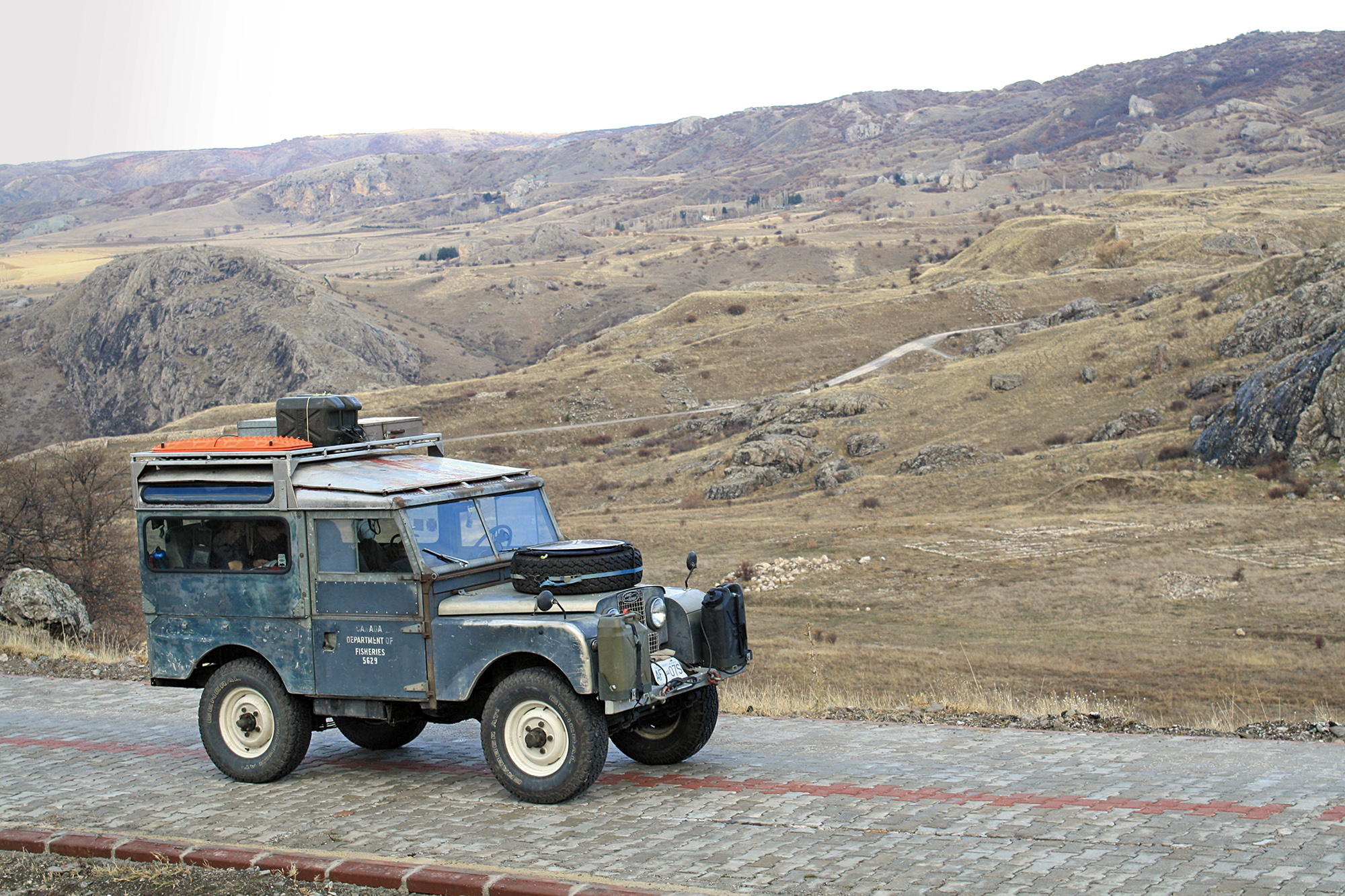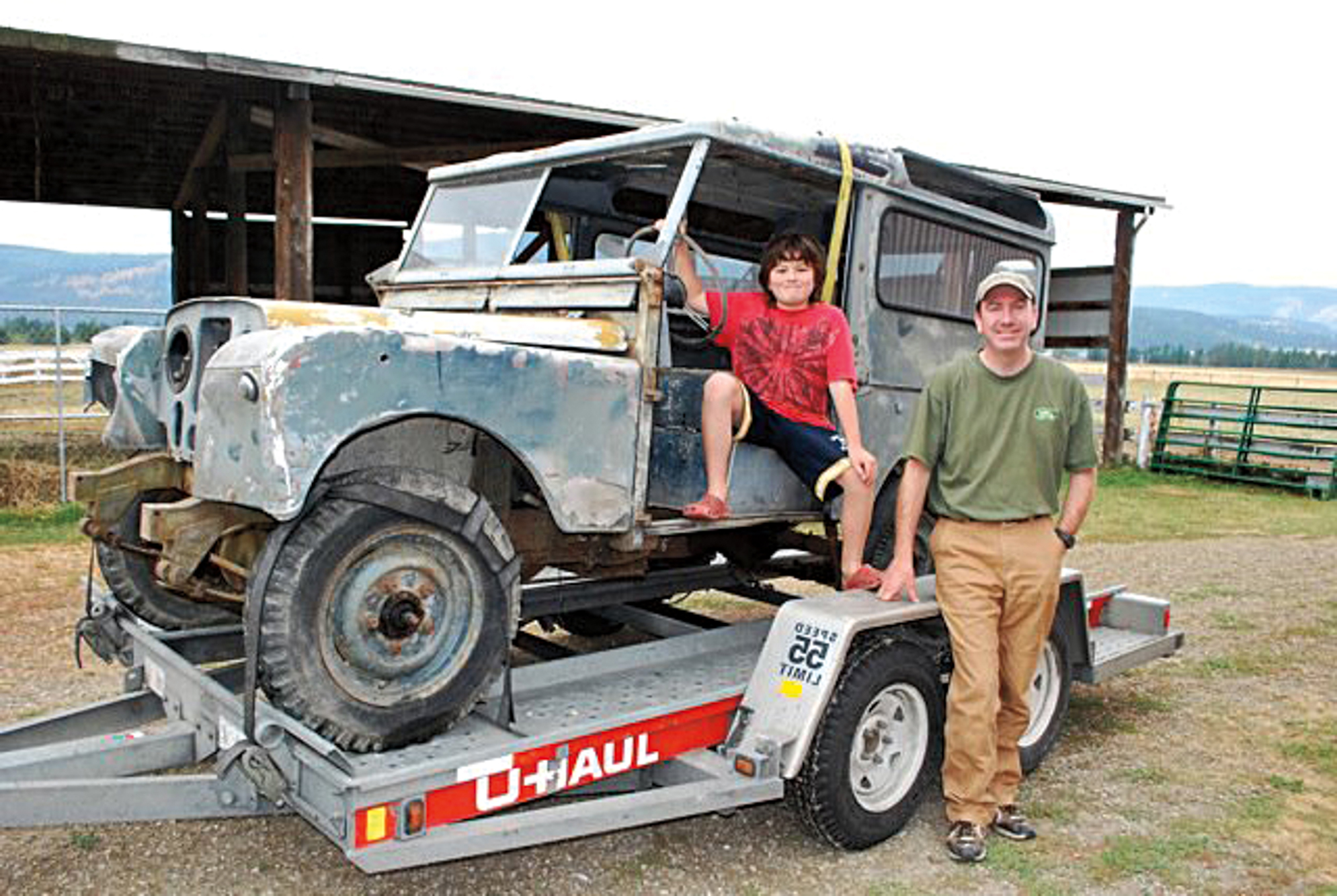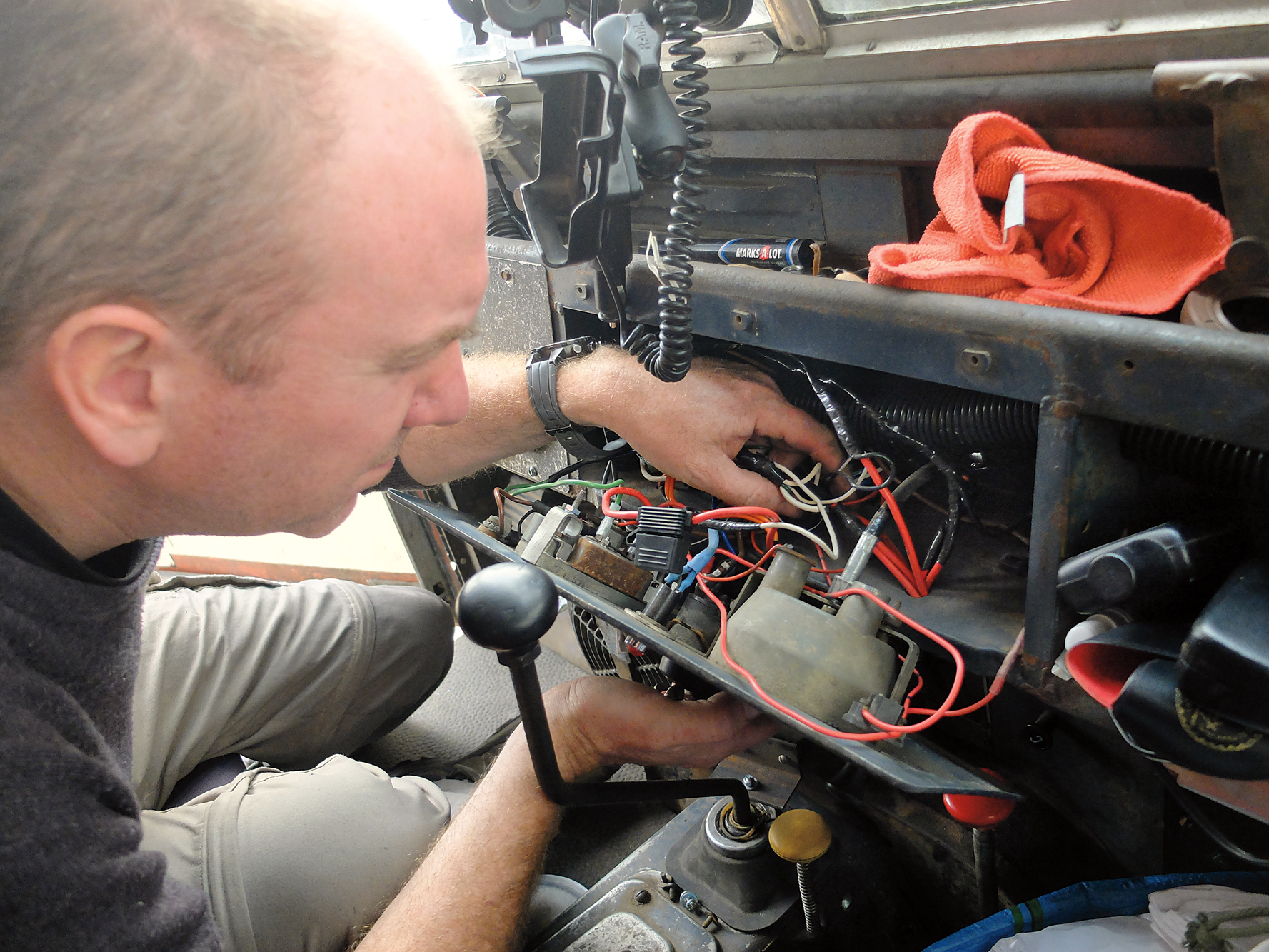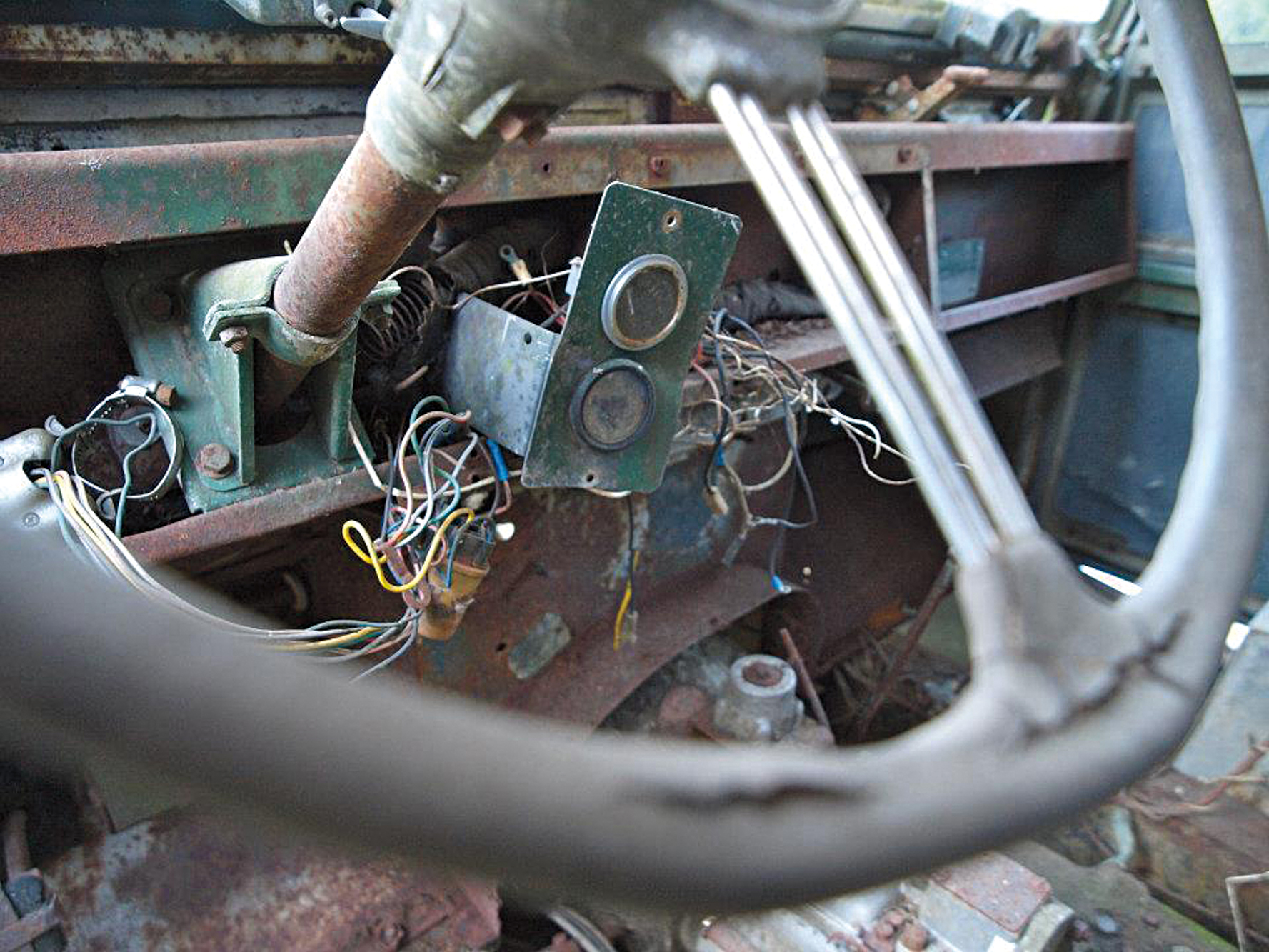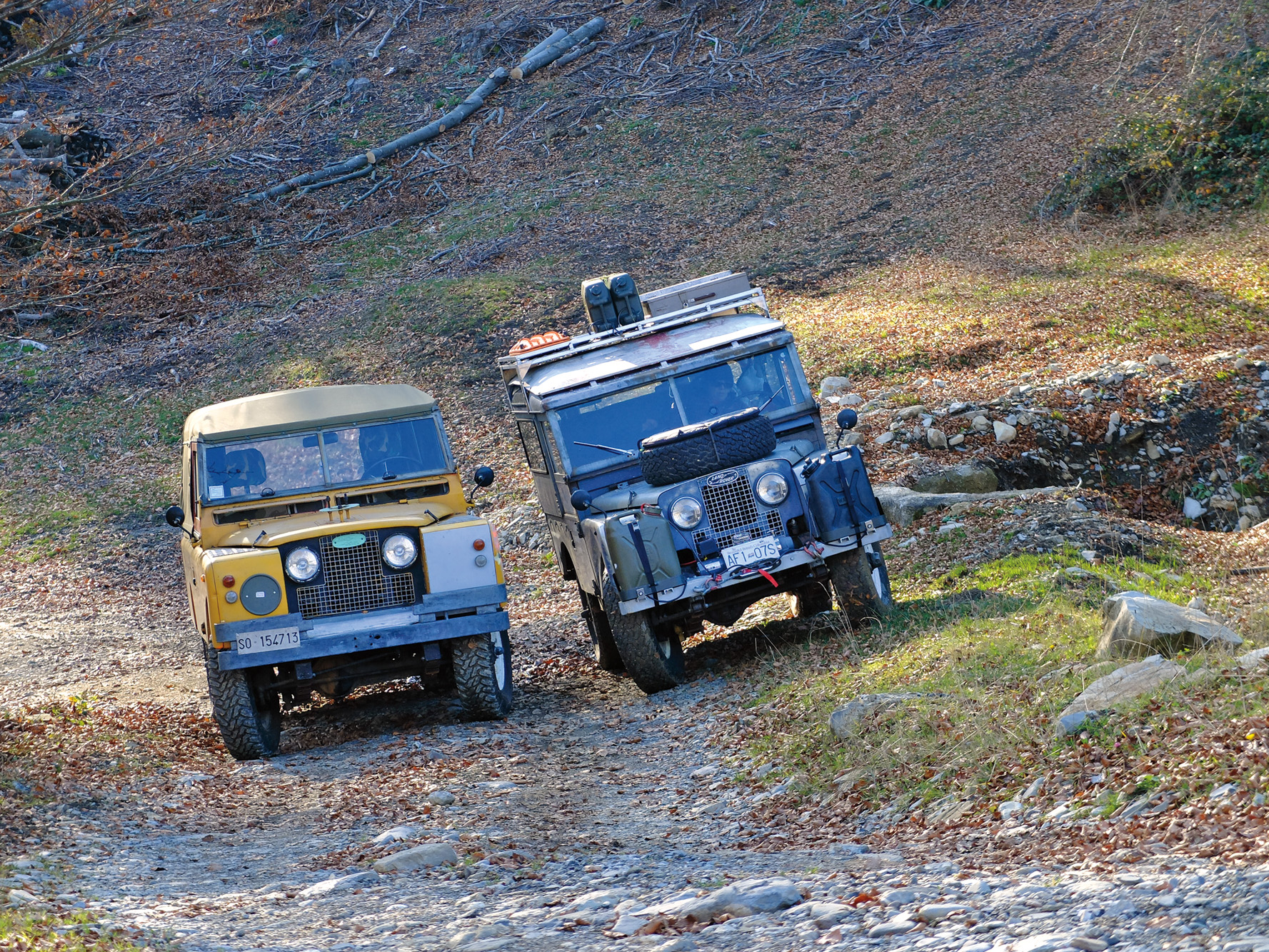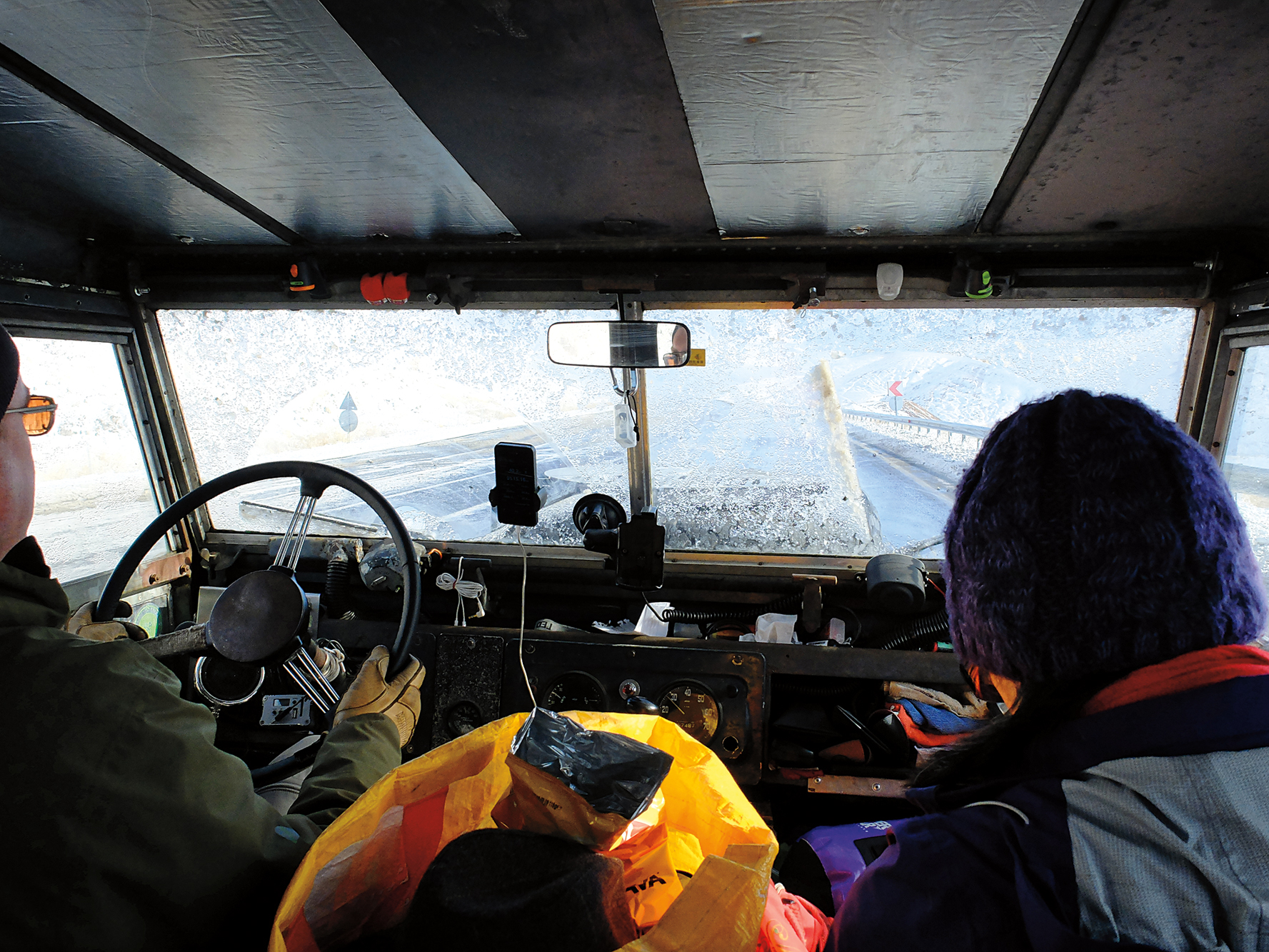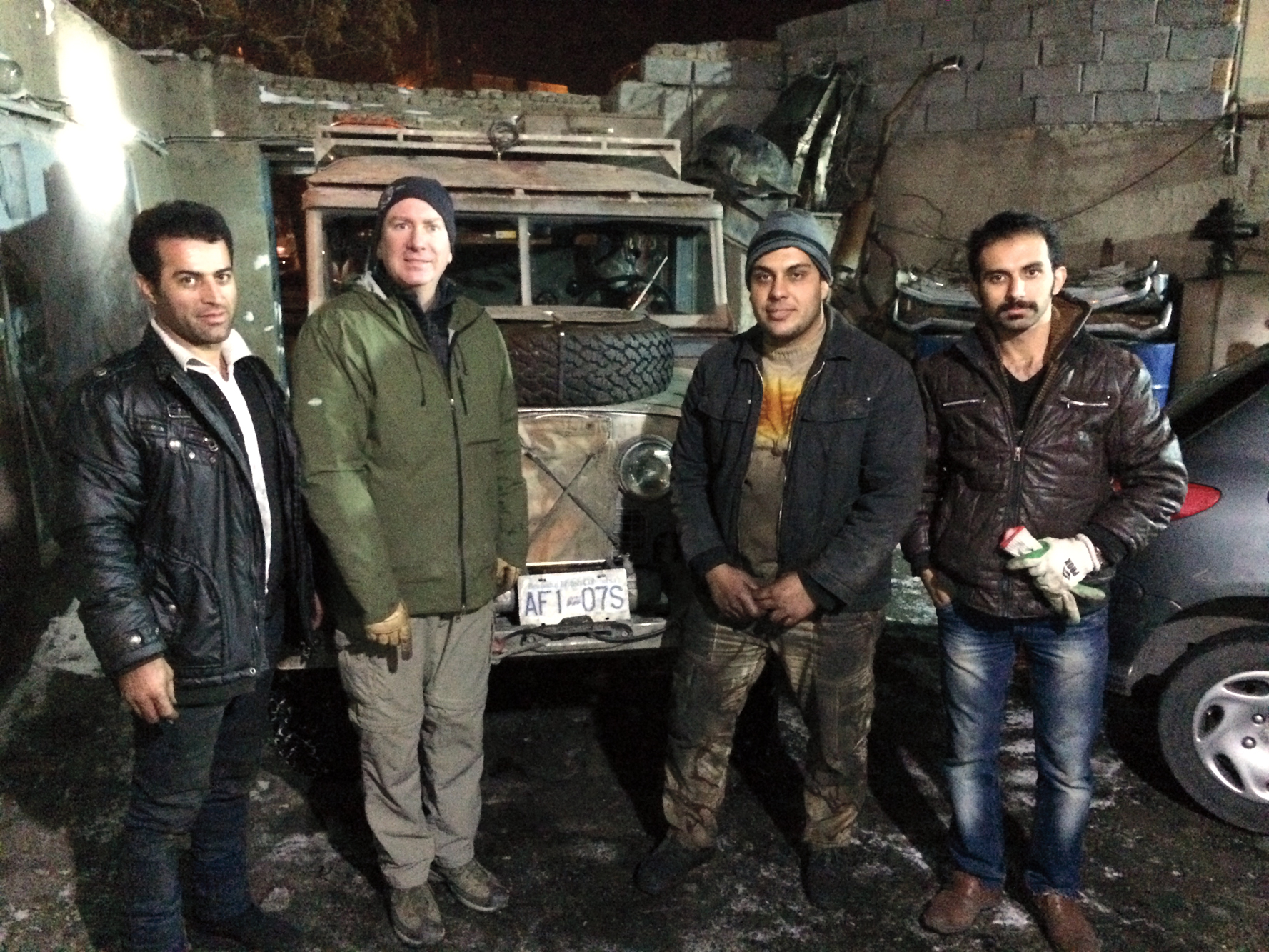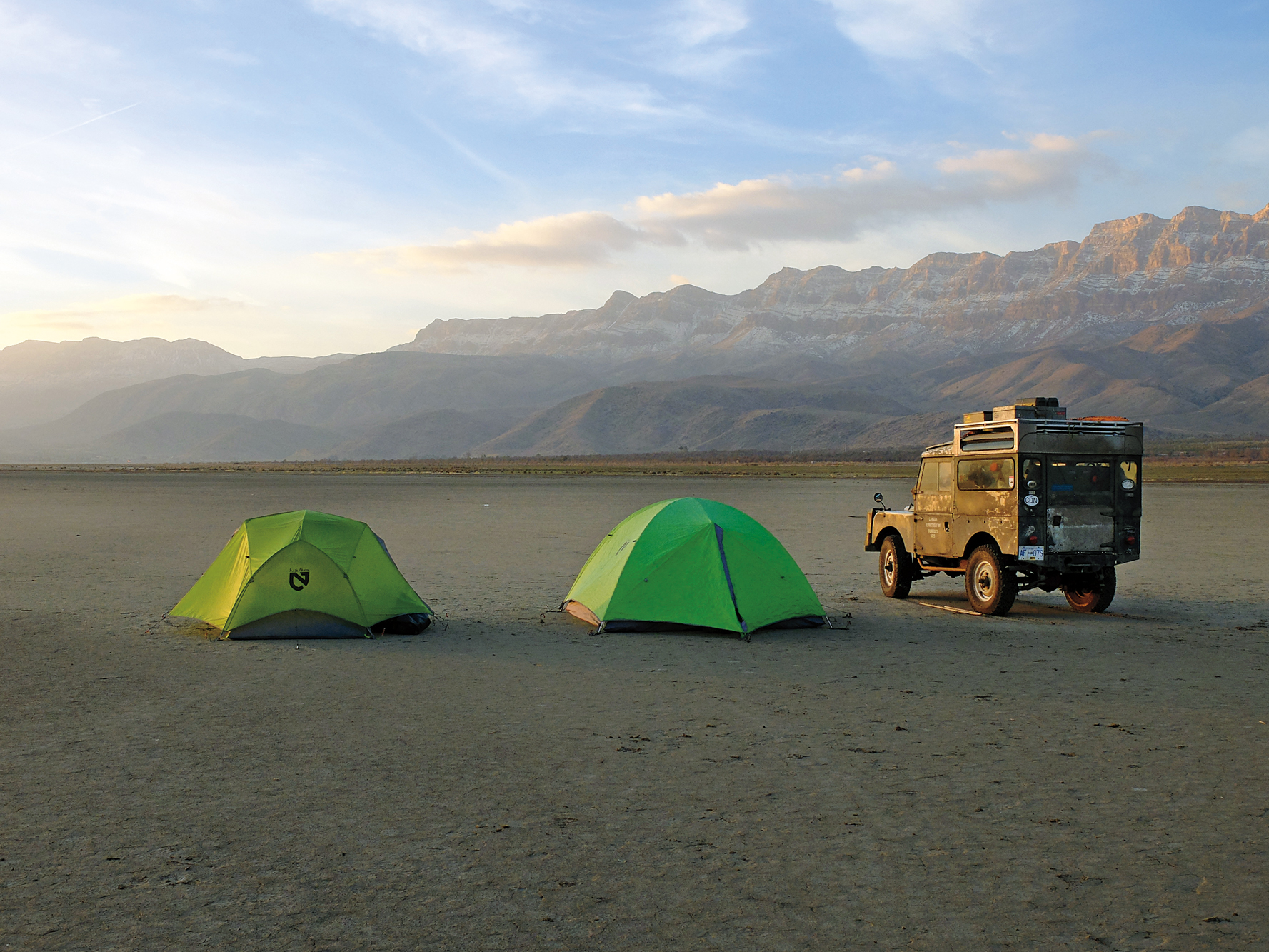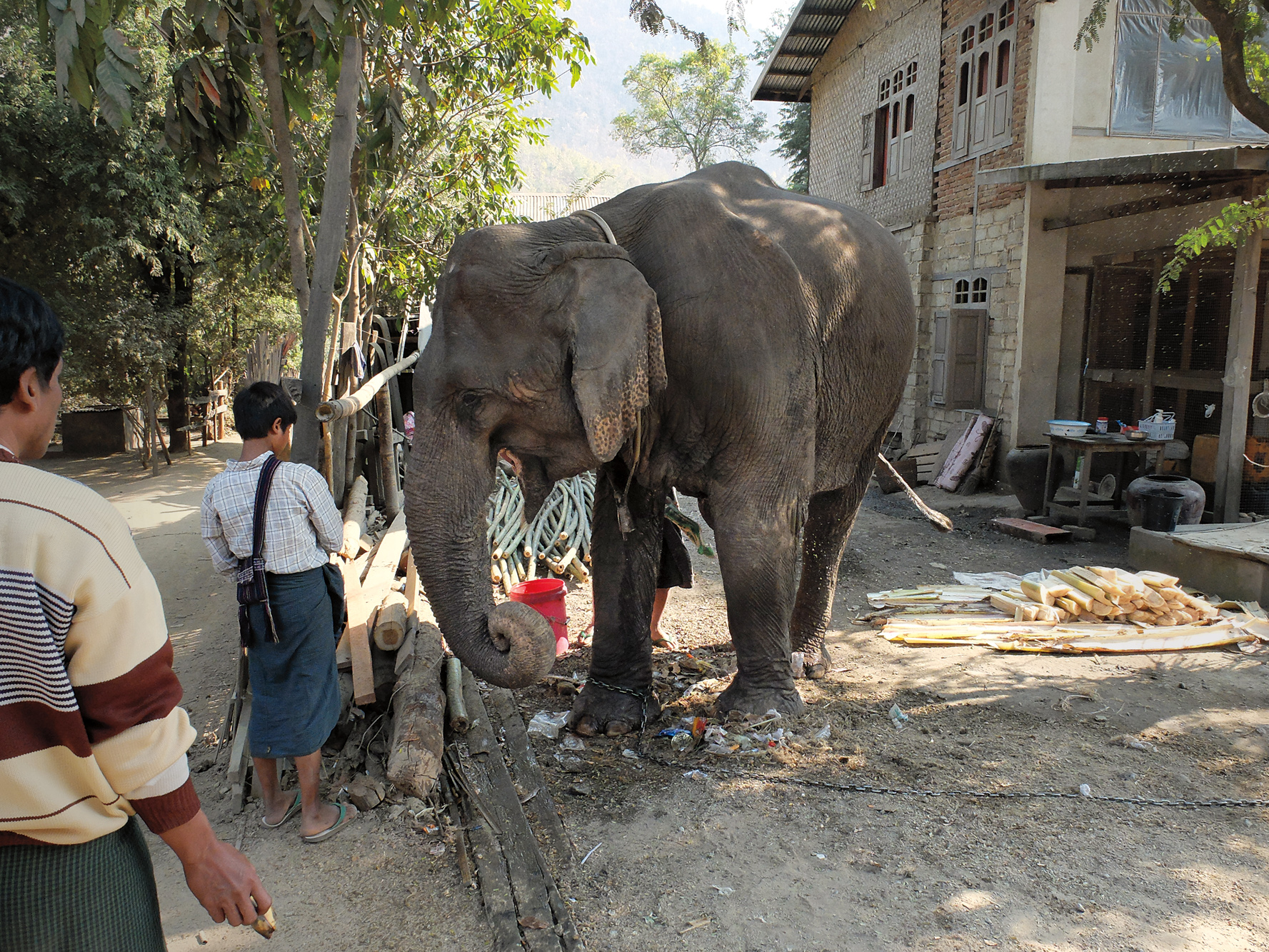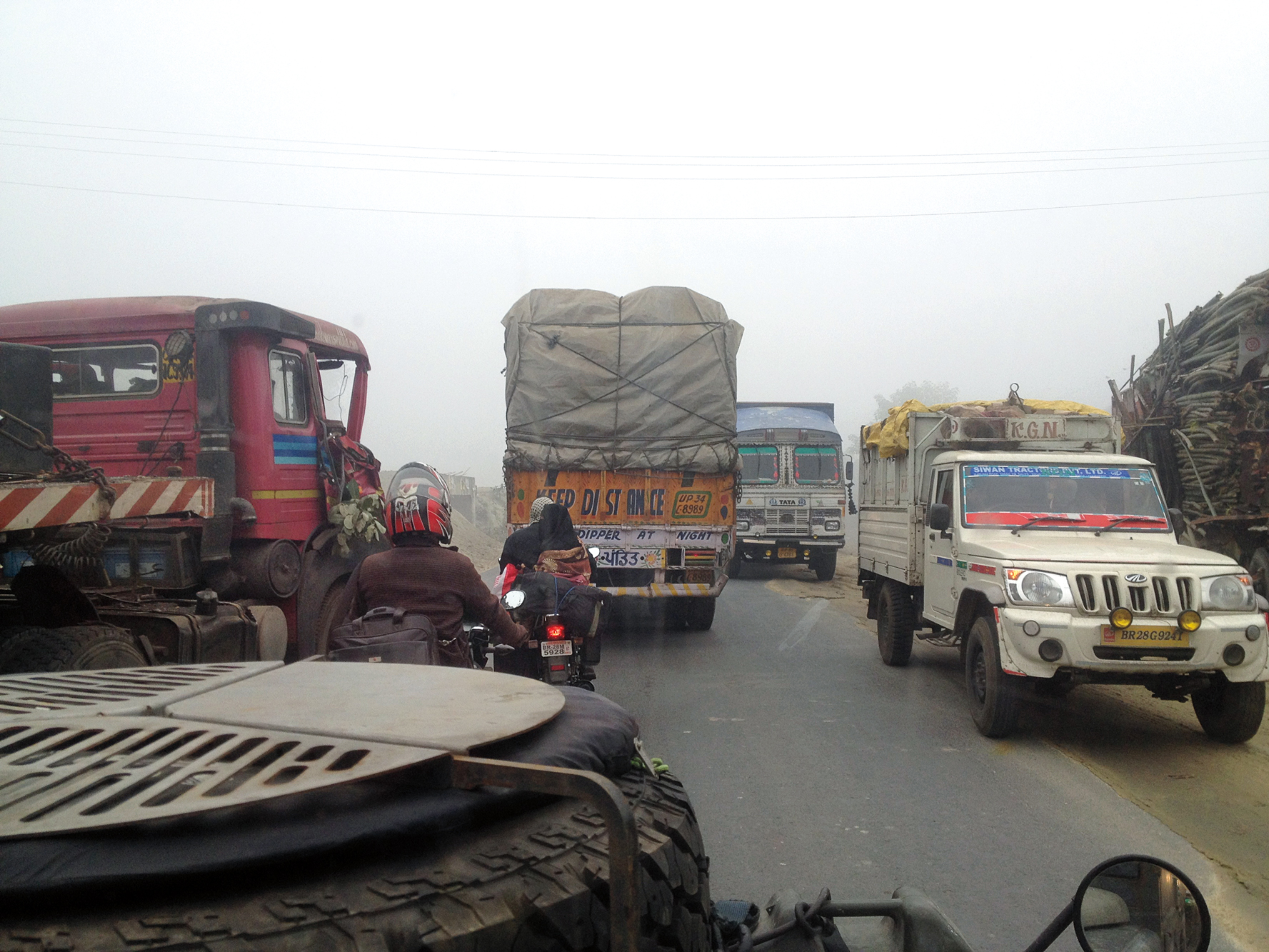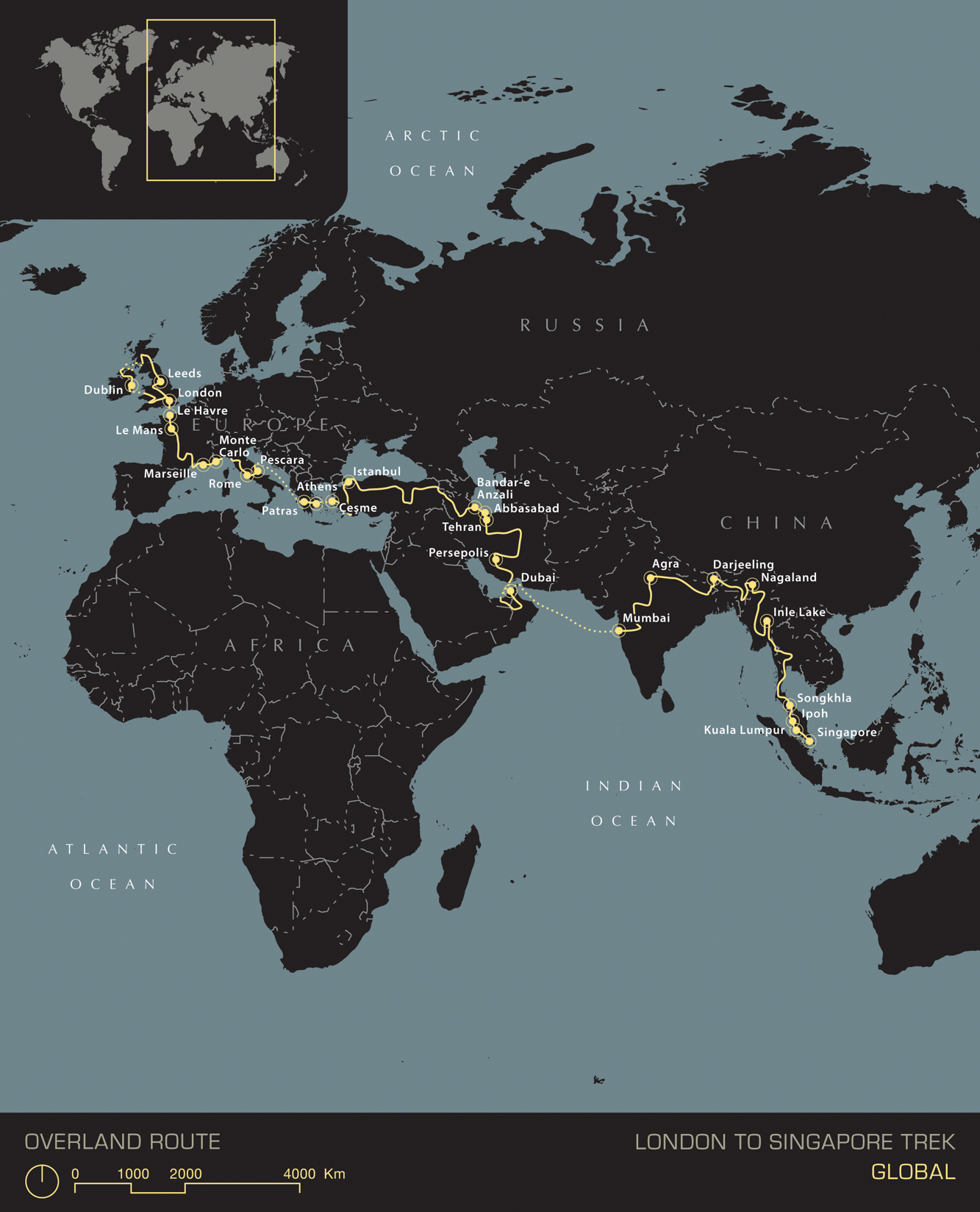“What do you mean the boat is late? How late?” A combination of mechanical delays, bad weather, and agent apathy meant that our 1954 Land Rover (Series 1, 86-inch station wagon) was going to arrive a month late in the UK. This set the tone for two things that happened over and over on our trip: every time we put our truck on a boat or in a container, it seemed to get lost or delayed; and surprisingly, Facebook came to our rescue in the form of various Land Rover enthusiasts and groups looking to help us.
With the truck delayed, we posted on Facebook, asking if anyone in England happened to have a vehicle we could borrow for four weeks. A couple of days later, Pete West, a friend-of-a-friend of- a-friend sent me a note. He offered his Defender 110 to us for a month at zero cost. This prodigious display of generosity made our month in the UK very special as we were able to explore England, Ireland, and Scotland in comfort and style.
Our goal was to recreate one of the most epic overland trips of all time. In 1955/1956, a young group of students from Cambridge and Oxford set off in two original 86-inch Land Rover station wagons, to travel from London to Singapore, the farthest point that one could conceivably drive in the British Empire. No one had driven beyond India in the past, but General George Stilwell had cut a WWII supply track through the “impenetrable” Burmese jungle a decade earlier. Thus, the hopeful young students thought there was a chance that these fancy new “4×4” Land Rovers might be able to traverse the now-overgrown track and be the first to reach the distant outpost of the commonwealth.
Their story, captured in the 1957 book First Overland by Expedition Leader Tim Slessor, has inspired countless expeditions over the decades. In 2005 the surviving members of the original team flew to Singapore for the 50th anniversary of their trip, and we had a chance to meet them since we were living there at the time.
Fast forward to 2013; I was working with Overland Journal and found an old Rover in a field in British Columbia that I picked up for $225 as a project for myself and my three boys. Publisher Scott Brady looked at photos of the truck and shook his head, saying that it was “one heck of a project.” I could tell he was doubtful it would ever make it back on the road. I couldn’t argue; the engine hadn’t run for 20 years, it had no glass, no doors, no seats, the wiring was shot, as were the brakes, tires, and steering—I thought I might have overpaid.
Research told us this was one of only three original Series-1, 86-inch station wagons from 1954 known to still exist in the world. I remember thinking, If we could restore this truck we could replicate the original First Overland trip; if only the Myanmar borders weren’t closed. But a few months later, Myanmar announced they were going to open their borders, and I immediately told my wife, Marianne, that we were going on a road trip.
We picked up three additional trucks in various stages of disassembly to get enough pieces to get our Land Rover running. We didn’t restore it, mind you, just got it going, made sure the steering and brakes worked, fitted some tires, doors, and glass, and called it done. It was finished only days before we set out; a few trips were made around the block to make sure everything was working (we had an electrical fire on the first test drive, which should have been a warning) and then we stuffed the Rover into a shipping container and sent it to England.
Eventually, our truck arrived in England, and Tim Slessor himself sent us off from Oxford, together with our friend Pete. We had our camping supplies, a day’s worth of food, and a few spare parts. The truck broke down on the very first day, and continued to be a repeat offender. We would drive until we broke down, spend an hour or two wrenching, drive a few more miles, then set up camp for the night. Some days were better than others in terms of distance covered.
We wanted to follow the original route as closely as possible but would need to make a few detours. Syria, for example, was having a civil war and was not a safe place to traverse; neither was Iraq or the mountain road along the Pakistan-Afghanistan border. We ended up going from England through France, Monaco, Italy, Greece, Turkey, Iran, UAE, India, Myanmar, Thailand, and finally, Singapore.
Before we left the UK, a friend and fellow Land Rover enthusiast from Italy named Michele Dallorso, who is also Overland Journal’s illustrator, asked me to stop at a small English village and pick up an old steering wheel he had bought over the internet to save on shipping. He promised a home-cooked meal and a place to stay if we would deliver it to his family farm in the mountains north of Genoa. With it strapped on the roof we headed for the ferry to France. As we sat in the queue, someone told us that jerry cans were not allowed on passenger ferries in Europe, even when empty. Ours were strapped to our front bumper and were difficult to miss. We quickly loaded them into the back between the legs of our boys, covering everything up with a conspicuous blanket as we drove past the dock agents. If they wondered why our children looked so cold under a big blanket in the back seat, they were too polite to say anything.
Le Mans was en route, a spirited little town filled with motorheads from around Europe. Exiting France into Monte Carlo, we indulged our motor-racing passions with a trip to the famous antique car museum. A lap or two around the famous road circuit seemed in order, and while we didn’t set any speed records, it was a stirring moment.
We finally arrived in the Italian Alps and delivered the steering wheel to Michele. Our camp setup was in the orchard behind his family home, one of 20 ancient stone houses atop a wooded mountain which still relied on wood-burning heat. We gathered in the kitchen with his family for a delicious feast of pasta with a pesto prepared by an Italian grandmother in the old way with mortar and pestle. Homemade red wine came from a vat the size of a VW beetle that Michele’s dad (called “Papa” by everyone) kept in the cellar. Even the boys imbibed as Papa kept secretly topping their glasses. At the end of the night, Michele’s parents gave us cloth-wrapped bricks which they had heated in the stove to put in our sleeping bags.
We left Michele’s home, and though we enjoyed the scenery immensely, the winding mountain roads of Italy took their toll on our suspension. The springs seemed to sag a bit and swayed more dramatically each day. Eventually, the tires were rubbing on the rear tub every time we took a corner at greater than walking speed. As we approached a long sweeper, Marianne would shout from the navigator’s seat to “lean left” or “lean right,” and we would all lean into the turn like Moto-GP racers.
After a few weeks of camping, we caught a ferry from eastern Italy to Greece and began to work our way across the country. Camping on deserted beaches, swimming in the crystal-clear water of the Gulf of Corinth, and looking down on a massive freighter passing underneath us in the Corinth Canal were highlights of our journey to Athens.
Athens is a spectacular juxtaposition of primordial and modern Europe. We camped in a former olive grove in the heart of the city, visited the Acropolis, and wandered the ruins in the sunshine. And yet, the very next day as we were shopping for fresh vegetables on a quiet back street, massive austerity protests in the city transpired less than a block away, with protesters hurling Molotov cocktails at police. CNN’s coverage of the riots resulted in a worried email from my mom. Assuring her we were okay, we continued east, island hopping across the Aegean Sea.
Every ferry east began with a human wave of Syrian refugees pouring off the boats, desperate to flee the conflict in their home country. By the time we reached Chios, less than five miles from the Turkish coast, we were in the heart of the crisis. Every flat patch of land on the island was covered with refugee camps: parents and children were huddled under tarps, with nothing but the clothes on their backs and maybe a small satchel. As we drove into a Red Cross camp trying to find a place to turn around, a big Croatian security guard blocked our passing. Knowing we were somewhere we shouldn’t be, fast-talking was at the ready, but it turned out he just wanted to take some photos of the Land Rover to send to friends back home.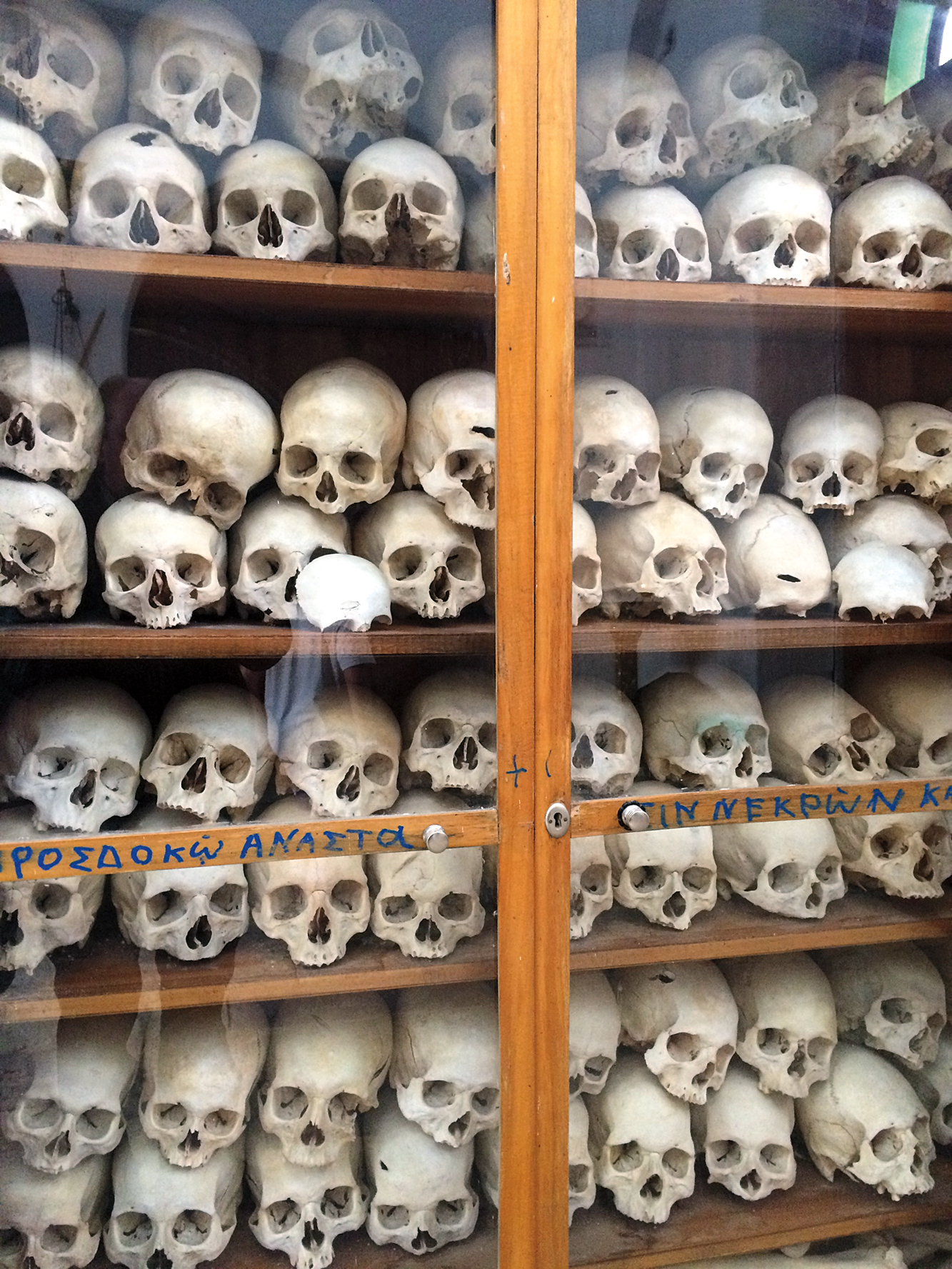
With no available place to camp, a room at a local bed and breakfast served our purposes while we explored the island. Wandering down a beach, we came upon a huge mound of lifejackets left by dozens of refugees who had arrived on the beach the night before. It brought home the sense of desperation felt by the people trying to leave the area that we planned on entering.
There was a small ferry that would take us to Turkey; it was more like a skinny fishing boat with a flat deck where you could park two vehicles, maybe three if they were small. Passengers sat in a little cabin in front of the cars. Ours was the only car heading east, and the five of us probably made up 30 percent of the manifest.
On arrival in Cesme, Turkey, a few hours of running around had us sorted out with local insurance and our carnet stamp, and suddenly we were officially in Asia. The first planned stop was the city of Ephesus, with some of the most well-preserved Roman ruins in the world. The library is well documented, but still takes your breath away, and the acoustics in the theatre are perfect, even after 2,000 years.
A deserted stretch of beach near the ruins served as our camp for the night. When a white panel-truck drove onto the beach a few hundred meters away, it inspired caution since there were organized gangs smuggling refugees nightly off of beaches just like the one we were camped on. We decided to take advantage of our 4WD and went about a mile beyond where the local 2WD vehicle tracks could reach. That gave us a lovely spot of quiet isolation where we could relax, cook, swim, and camp.
The next few days were taken up exploring Ephesus and heading toward Istanbul. The journey wasn’t without issues: the carburetor decided to shed some parts along the highway which made for a creative repair. In Istanbul, we rented an Airbnb for a few days and visited a great mechanic. The mechanic was better than the Airbnb—there was a chalk outline of a body in the street around the corner from where the Rover was parked. When the boys told me about it, I made sure to give them the appropriate parental advice: “Don’t tell your mother.”
Hussein had been the Turkish team’s mechanic in one of the Camel Trophy events and knew his way around an old Land Rover. He (and his amazing young translator/helper Yigit) swapped us to a Weber carb, added some leaf helpers in the rear suspension, and cleaned a bunch of gunk and silicon out of our fuel system. In the meantime, we were free to explore Istanbul.
As we headed east again toward the Iranian border, there were freezing temps and blowing snow in the mountain passes. The demister in the Series 1 clears a 3-inch patch of windshield directly behind the steering wheel. To see, the driver needs to place his face into the steering wheel and peer through the little hole with one eye. Turning the wheel usually results in accidentally punching yourself in the nose.
Late on our last night in Turkey, we rolled into the border town of Doğubayazıt, complete with a grubby hotel room downtown as the overnight temps plummeted to -18°C (0°F). In the morning, the Rover was so cold that the oil was the consistency of toothpaste; when the starter was slowly turned over, the engine rotated but not enough to start it. Via mime, I asked the hotel manager to call a local tow truck so that my jumper cables could be connected to it, allowing the engine to slowly turn over enough times to thin the oil enough to get the motor to catch. He assured me he would take care of the problem, and I sat down to have breakfast, my back to the window, while Marianne faced outside where our truck was parked. Something must have been lost in translation, because Marianne first observed some styrofoam being brought out, then paper, and pieces of wood. The last two sent off warning bells, and Marianne said, “I think someone is building a fire under our truck.” Though it would have been effective, this highly flammable option was quickly laid to rest as I explained to the manager how the Rover leaked fuel and oil in a dozen places. A brainstorming session resulted in a bucket brigade where hotel staff passed successive kettles of hot water from the kitchen to me at the end of the chain to slowly pour hot water over the engine block. A few dozen kettles later, the truck started, and it was left to run while our breakfast continued.
The prospect of Iran had us nervous: our credit cards wouldn’t work, we were not sure about our phones, and there were the stories on cable news about the oppressive regime. The reality couldn’t have been further from the truth. We bought a local SIM card just over the border, and the shop agent installed a VPN so we could use the internet. Soon we were chatting with the Iranian Land Rover club online and arranging to meet them—they were the most hospitable and gracious people we had met on our journey thus far, often stopping their cars when they saw our license plate to shake our hands, welcome us to Iran, offer us food, or ensure we felt welcome. Iran has a love affair with Land Rovers—the country bought all the old tooling from the Santana (Spanish-made Land Rover) factory, and today you can still buy a brand-new Defender in Iran, with a Mitsubishi drivetrain.
Our Iranian friends Mohsen, Ali, and dozens of others showed us their country, helped us with parts and repairs at any time of the day or night, and even took us off pavement in the mountains around Tehran. A good example of our interactions with the Iranians is when we met two siblings near the ruins of Persepolis. Sayed was a Land Rover fan who had contacted us online. He didn’t speak any English, so his sister Zara came as an interpreter. While looking over the engine, Sayed and I noticed that the alternator bracket had cracked and was in danger of failing. Sayed asked us to follow him to his mechanic’s workshop, where we decided to modify a different style of bracket for a repair that would be stronger than the original.
Meanwhile, Zara invited Marianne and the boys to their home for lunch. Marianne and Zara hit it off, chatting about their lives, taking a selfie, and exchanging addresses. They also played with Sayed’s daughter who was about four years old. When Sayed and I returned with the repaired truck, lunch was served. The food was fantastic and plentiful: rice, chicken, vegetables, and pickle, served at floor level as is customary. After lunch, the family gifted us with a large jar of homemade pickle which became an accompaniment to our meals for the next few days.
We left Iran by ferry from Bandar Abbas to the UAE. A broken ferry resulted in a 20-hour delay followed by a stormy crossing of the Persian Gulf in a small, flat-bottomed boat that never should have left sight of land. The following day, our vomit-and salt-encrusted ride reached Sharjah. The next few weeks were a decadent period of bliss, staying in a friend’s villa for Christmas and the New Year holiday, exploring the desert with more local Land Rover fans, getting some additional repairs taken care of, and planning for India.
India was easily the most challenging country of the trip. From the two-week customs delay in getting the truck through Mumbai to the terrible highways with random unmarked ditches across them, we were never bored. Marvelous memories were made as we camped on the grounds of a Buddhist monastery, visited the Taj Mahal, and explored the jungles of Nagaland. India is a diverse continent rather than a homogeneous country: on the one hand, you have piles of burning trash, crushing poverty, and a crumbling infrastructure; on the other, there is the most multifarious culture in the world, the birthplace of global religions and cities that are thousands of years old. The persistent dichotomy of the two extremes was jarring at times.
Halfway up Indian Highway 110, climbing the Himalayan foothills to Darjeeling, the clutch suddenly failed. One minute we were slowly climbing the hill, the next minute the engine speed was increasing just as fast as our forward speed was decreasing, accompanied by a sudden loss of oil pressure and the distinctive smells of burning oil mixed with the burning clutch. As the clutch was fairly new, and our worn rings resulted in high crankcase pressure under loads, it was easy to guess what had happened: the main seal on the back of the engine had failed, soaking the clutch in oil. Pulling as far to the side of the winding mountain track as possible, I immediately shut off the engine before the dropping oil pressure resulted in engine damage. Sitting for a few minutes, blocking out the sounds of my family asking me what was wrong with the truck, I silently asked myself, “Is this it? Is this the breakdown that ends our trip?” We were halfway up a steep road to Darjeeling with no cell service, no local contacts, without the needed part— I didn’t even know if the part was available anywhere on the globe.
I pulled the fuel line off the carb and fed it into the top of the bell housing to wash the oil off the clutch, and then we limped up the hill and into Darjeeling. It turns out the region is Series 1 heaven, as the plucky little trucks used to service the tea plantations. We managed to find a local mechanic who machined a metal overseal and then cut a leather seal from an old leather Gurkha soldier’s hat.
From Darjeeling, it was a short but unsettling trip through the mountains to Myanmar. The country was still figuring out its infrastructure, but the welcome of the people was overwhelming. Many of the roads were in the process of being hand paved by local villagers, fitting rocks into the road the way rock walls are built, with precision and skill. Smaller gravel and sand would be swept into the cracks, and finally, hot tar was hand-poured and spread over the surface. Men, women, and children did this process together, each responsible for a different part. But as we drove by they all stopped their work, gave us the biggest and happiest smiles imaginable, and waved.
We spent a couple of wonderful weeks in Myanmar, enjoying the scenery, the temples, and the incredible food, always served family-style with dozens of side dishes. Inle Lake was a fascinating stop, with a floating village where entire generations had never stepped on solid ground; and we found ourselves climbing goldplated statues towering hundreds of feet above the surrounding countryside. One epic morning was spent scaling to the top of an ancient pyramid in Bagan to watch the sunrise over hundreds of temples.
Myanmar led onward to Thailand, where we were again put under the wing of the local Land Rover community. They fed us, serviced our truck, housed us for free, rescued us when we broke down, and even took us for a wild karaoke session on our last night in the country. The fact that many of them only spoke Thai never interfered with the good times we all had together. The crowning (pun not intended) moment was when they presented us with a picture of the Thai king and his Series 3 Land Rover. We were touched, and promised that the image would be hung above our heads and never placed on the ground, as is traditional.
One of the funniest occurrences on the trip was in Bangkok when my son Declan was ill and stayed at the hostel while the rest of us went out for dinner. We returned only to discover that he had put the chain lock on the door before climbing into bed wearing his iPod earphones. Our shouting couldn’t wake him, so we lobbed our sandals and flip-flops at him through the crack in the door. A couple did reach him, but he remained asleep. Only when our very last flip-flop landed on his head did he awaken and let us in.
We were still having ongoing truck issues, and when we reached Malaysia, our friend Rate and his wife, Alyna, met us for dinner. After dinner, Rate looked over the truck and discovered our distributor was not operating correctly. Luckily, he had a spare, and he changed it out and set the timing, right there in the parking lot of the restaurant. He said it was a lot more comfortable than many repairs he had done in the Malaysian jungles.
When we eventually arrived in Singapore, it was an emotional experience for all of us. Members of the Singapore Land Rover Club met us at the border and escorted us to a restaurant where dozens of Land Rovers were gathered to welcome us. This process was repeated a few nights later when the group rented a local nightclub and had us park the Rover in the center of the bar while the party went on around it. Besides being granted what felt like celebrity status, we felt an extension of what we’d experienced throughout the trip—that this global group of enthusiasts, who we’d met via Facebook, had adopted us as family, and they had all taken part in our journey, nurturing us and our ridiculous truck halfway around the world. We spent a month in Singapore catching up with friends and family, and then it was time to put the little truck in a box destined for home. Now she is parked behind our house in British Columbia, awaiting the next big adventure.



